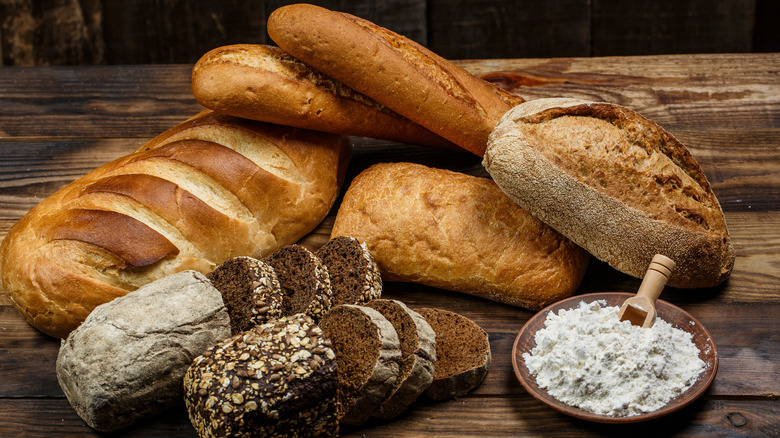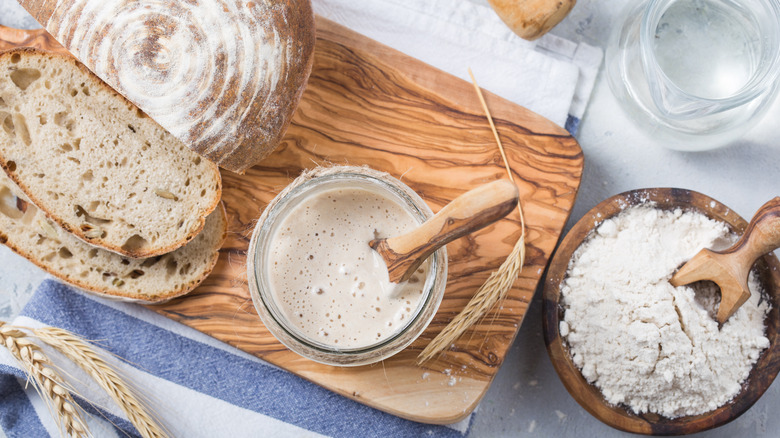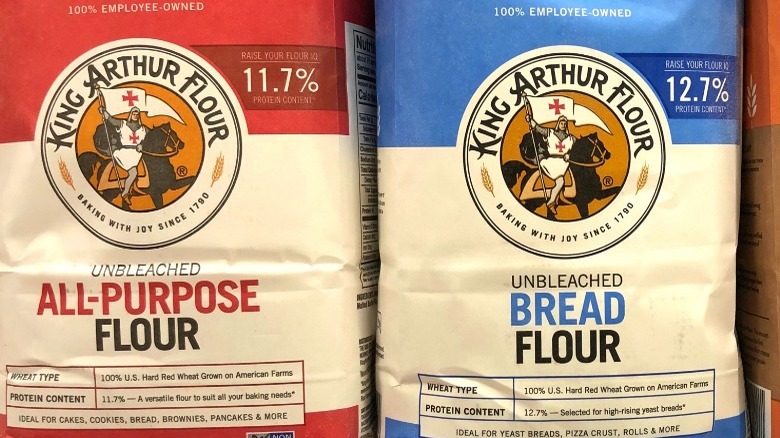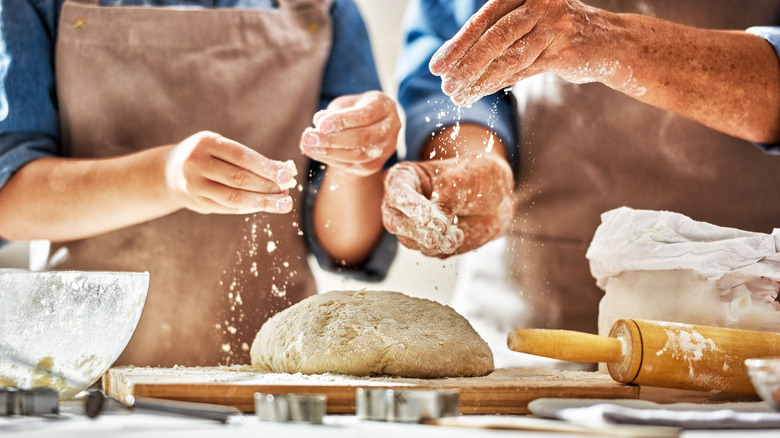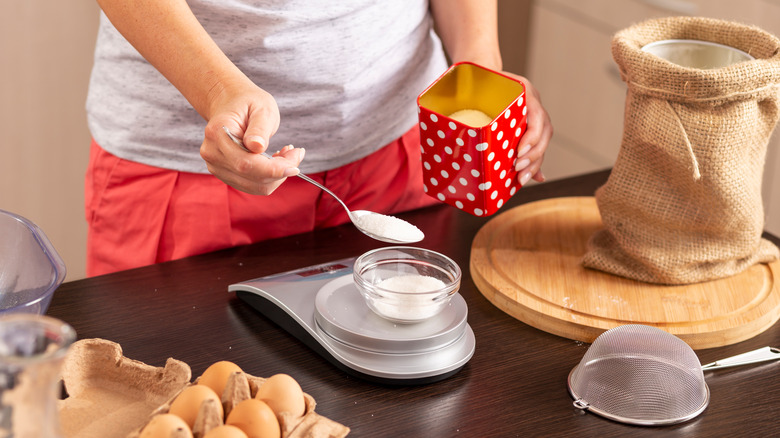What Is Bread Flour And How Do You Use It?
Baking has become an incredibly popular hobby lately, with so many people turning to the activity that it caused a major flour shortage. Fortunately, that looks to be a thing of the past (or is it?), so if you found yourself unable to try your hand at whipping up a cake, cookies, or a loaf of bread, now may finally be the time to give it a go.
A trip down the baking aisle at your local grocery store will (hopefully) have everything you need. However, you may find yourself with a few questions, particularly when it comes to picking out a bag of flour — who knew there were so many kinds? There's all-purpose flour, which is what we're most familiar with, but also bread, cake, and self-rising, to name a few. Some specialty supermarkets even stock cricket flour, but that's a story for another day.
The plethora of options isn't a ploy from the industry to get you to spend more money. Though all-purpose flour will work in your recipes most of the time, swapping it for one of the more specific varieties can yield a higher-quality baked good. Take bread flour, which, as its name suggests, should be used for making bread — even Paul Hollywood suggests using it in place of all-purpose flour. But what is it exactly about this ingredient that makes it better, and how do you go about using it? Stay tuned to find out all of that and more.
What is bread flour?
Flour has been around for more than 30,000 years (via History of Bread), but bread flour only made its way onto the scene a few hundred years ago. According to Bakerpedia, the initial origins of this variety date back to the U.K. in 1886, though it wasn't patented until 1902 in Boston by a man named Joseph Lee.
If this wasn't already obvious enough, bread flour does its best work when used to make bread products, but more specifically, Webstaurant Store says it was designed for "yeasted bread." Referred to as strong flour in the U.K., or sometimes as hard wheat flour because it is milled from hard spring wheat (via King Arthur Bread), this variety of the pantry staple is high in protein which, in turn, makes it rich in gluten, aka the stuff that gives structure to bread dough and texture to the final product.
It is a key component to the chewiness we've come to know and love in treats like soft pretzels and bagels, leading one expert to dub it "the underwire bra of the baking world" (via Bon Appétit).
Bread flour vs. all-purpose flour
All-purpose flour and bread flour may look the same on the outside, but, as previously mentioned, using bread flour in place of all-purpose will give you an even better loaf. This is because bread flour has a higher protein content than the regular stuff.
According to The Pioneer Woman, regular flour is typically between 8% and 12% protein while bread flour ranges anywhere from 12–15%. This slight difference is what produces more gluten in the dough, giving it "stretch and elasticity," per Bon Appétit, while also being key for the finished product's "characteristic chew." Bread made with bread flour will also rise well and have an overall better structure (via The Pioneer Woman).
While the structure produced from the extra protein in bread flour is great for things like pizza crust, that texture isn't quite as desirable in other types of baked goods like biscuits or cake that are meant to be light and fluffy. All-purpose flour's lower protein is what gives it its versatility, so if you're going to stock up on any type of flour, this is the one.
How to bake with bread flour
Along with loaves of bread (yes, that includes sourdough!), bread flour is great to use for pizza crust, pretzels, dinner rolls, bagels, and can even take your chocolate chip cookies to the next level. Bob's Red Mill reminds us that the best type of flour to use is the one called for in a recipe, but if you're whipping up one of the aforementioned treats and don't see anything specified, you can easily use bread flour — though there are a few things to know to ensure that everything goes smoothly.
There is no need to adjust the amount called for, though The New York Times explains that the higher protein content in bread flour may lead to your dough turning out a bit dry. To combat this you can add water to your dough 1 teaspoon at a time, and if you happen to add too much, simply add a bit more flour until you get it to the right consistency.
It is also important to make sure you knead your dough enough when using bread flour, as this is where the gluten strands are formed that will ultimately give your baked bread a desirable texture (via Webstaurant Store).
Here's how to make your own bread flour at home
There's no need to venture out to a specialty grocery store to pick up a bag of bread flour; it can typically be found at your local market. However, if you do find yourself staring at a shelf with limited options, there are a few things you can do if you have your heart set on baking a loaf of bread. Of course, you can always use all-purpose flour in place of bread flour, or you can gather the ingredients to make your own at home.
Your shopping list for this is surprisingly short, in fact, it only includes two things: all-purpose flour and vital wheat gluten, which Kitchn describes as a "super-powered flour" (though it's not technically flour) that is high in gluten and low in starch.
Fast Food Bistro suggests only putting together this easy, makeshift bread flour a cup at a time when needed. Start by measuring out 1 cup of all-purpose flour, but remove 1 1/2 teaspoons of it and replace it with the same amount of wheat gluten. Sift the two together in a sieve to mix them and voilà! Your very own homemade bread flour.
